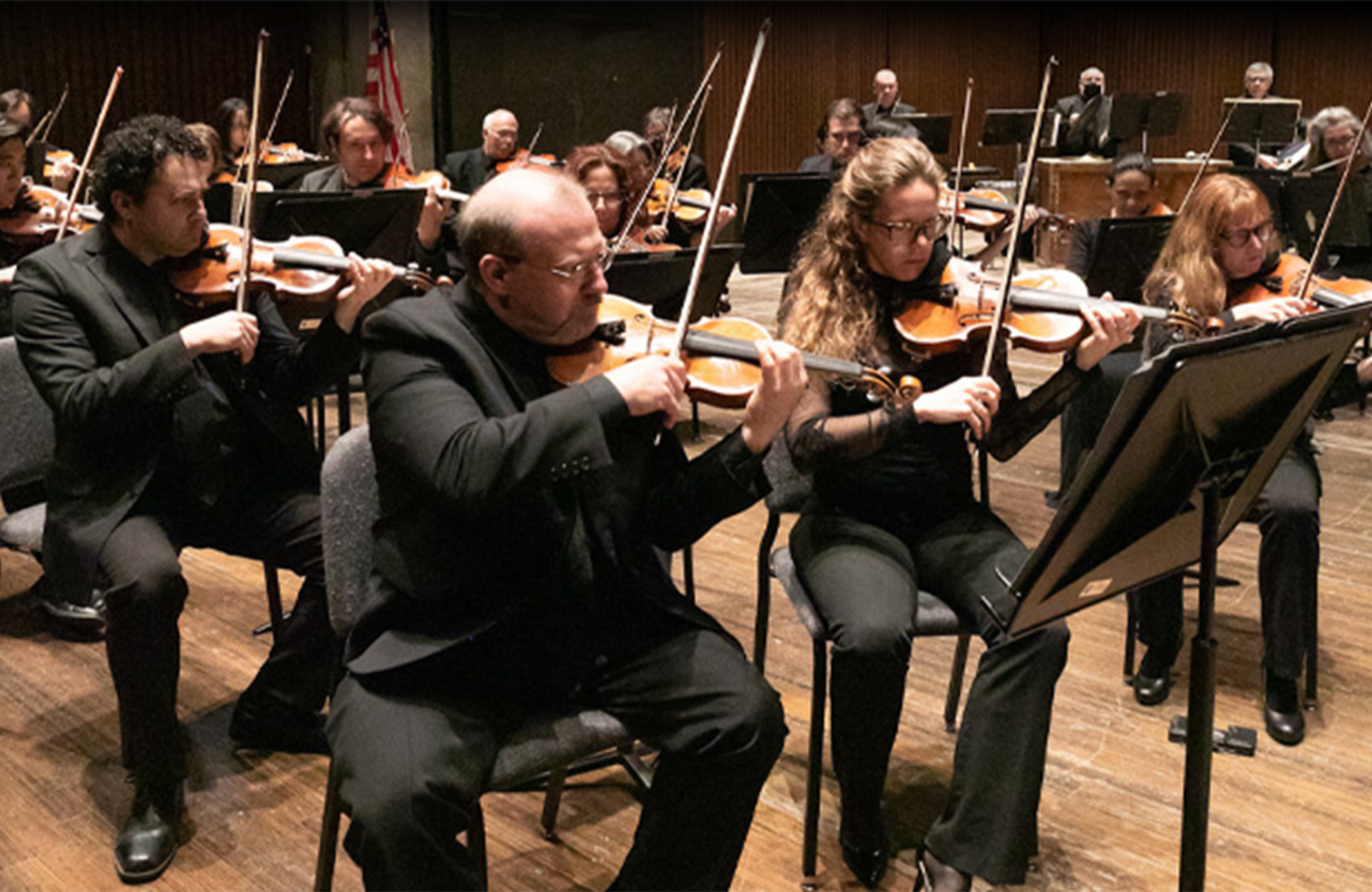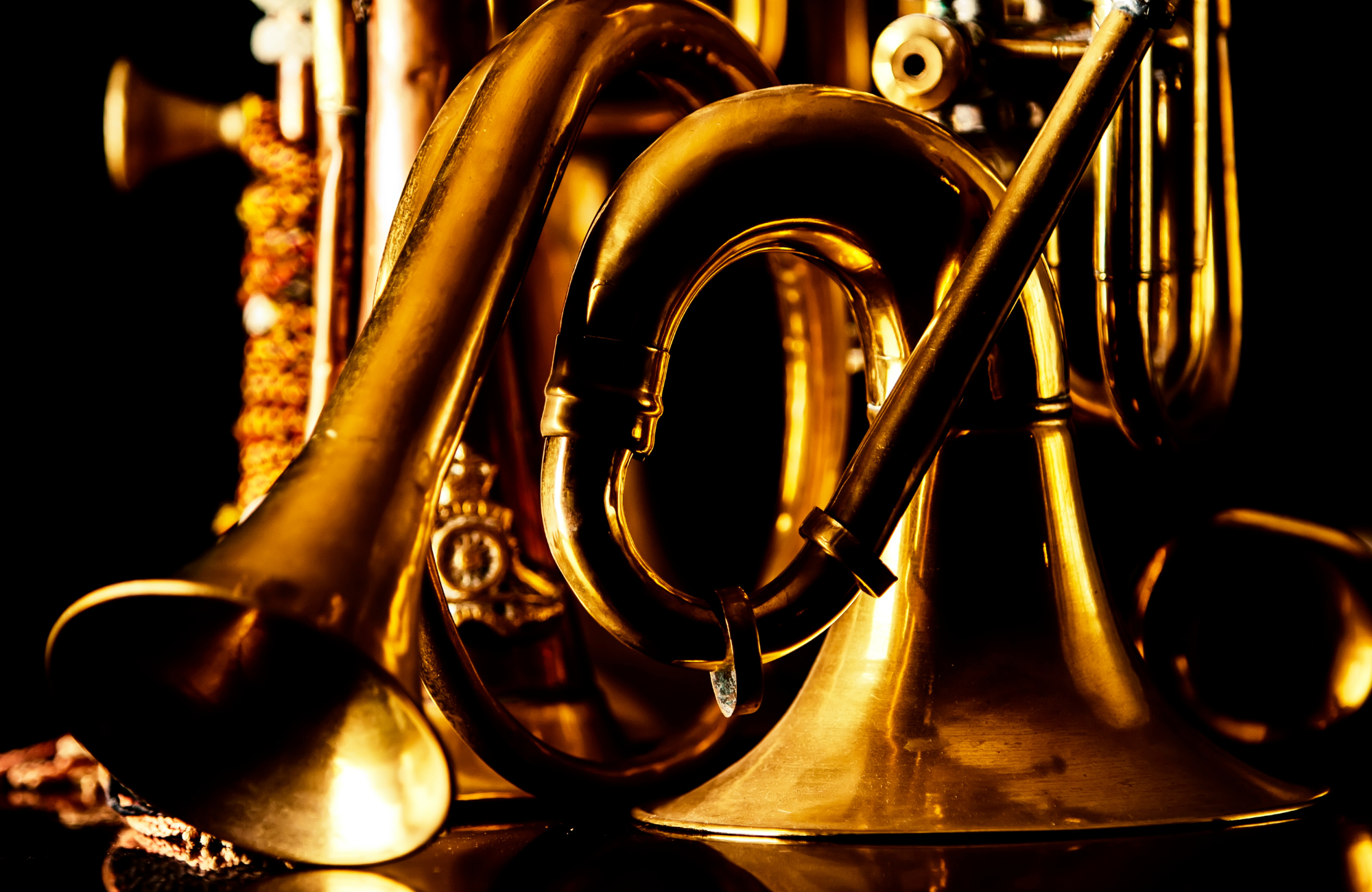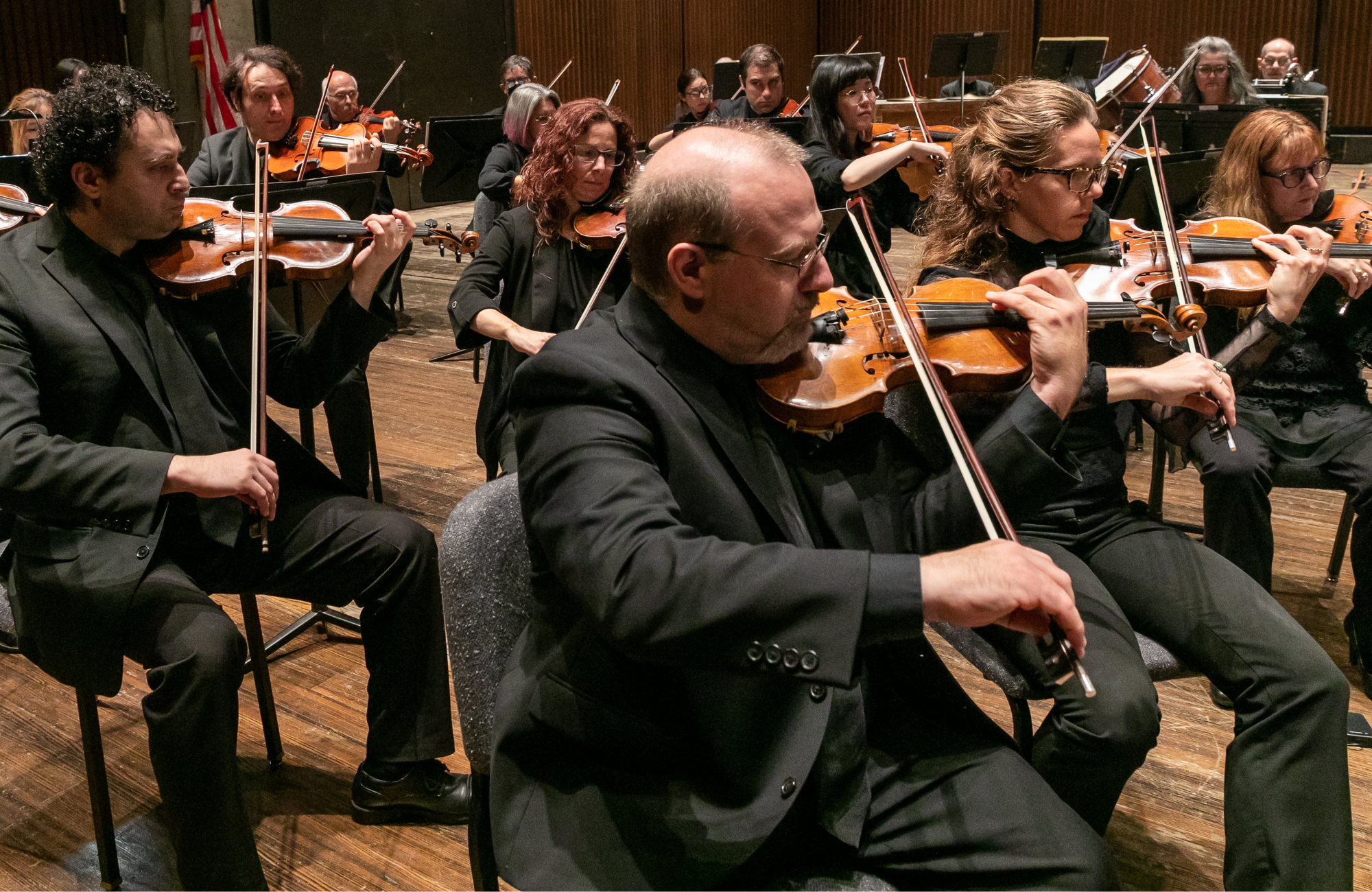The Syracuse Orchestra’s brass section is highlighted in this afternoon concert! Discover the fun “Surprise” for yourself in Haydn’s Symphony No. 94, then compare the Haydn with Prokofiev’s Classical Symphony which he wrote as a modern interpretation of the classical styles of Mozart and Haydn.
PROGRAM
GABRIELI: Septimi Toni No. 2 & Sonata pian e forte
HAYDN: Symphony No.94, G major “Surprise” ![]()
PROKOFIEV: Classical Symphony ![]()
*NO INTERMISSION
LARRY’S LISTENING RECOMMENDATIONS
PROGRAM NOTES
This afternoon’s concert gets its name—“A Classical Surprise”—from the symphony by Franz Joseph Haydn (1732–1809) that closes the program. As we’ll see, that’s not the only surprise today; but let’s begin there.
In the 1790s, Haydn made two successful trips to London, where the impresario Peter Salomon commissioned two sets of symphonies (six each). These were rapturously received, and have been entrenched in the standard repertoire ever since—no surprise, since they represent Haydn at the peak of his art, flaunting his orchestral virtuosity, formal ingenuity, and melodic appeal.
<...This afternoon’s concert gets its name—“A Classical Surprise”—from the symphony by Franz Joseph Haydn (1732–1809) that closes the program. As we’ll see, that’s not the only surprise today; but let’s begin there.
In the 1790s, Haydn made two successful trips to London, where the impresario Peter Salomon commissioned two sets of symphonies (six each). These were rapturously received, and have been entrenched in the standard repertoire ever since—no surprise, since they represent Haydn at the peak of his art, flaunting his orchestral virtuosity, formal ingenuity, and melodic appeal.
Among the first set was the 1791 Symphony No. 94 in G, popularly known in English-speaking countries as the “Surprise” Symphony. (In German-speaking countries, it’s known as “Mit dem Paukenschlag”/“With the Drum-Crash.”) It gets its name from a particular jump-scare (in case you don’t know the symphony, I won’t spoil the effect by telling you precisely where it is). Haydn, however, traditionally enjoyed playing with the expectations of his listeners, and this symphony has dozens of other surprises as well. Many of them, like that infamous drum stroke, involve loud outbursts where we don’t expect them. But at least one (at the beginning of the finale) involves holding off on a forte when we do expect one; and many others involve odd phrase lengths, surprising syncopations, unusual colors. All in all, this symphony has all the wit of Haydn at his best.
The Symphony No. 1 (“Classical”) by Sergei Prokofiev (1891–1953) also has the wit of Haydn at his best. For while this work is anything but a pastiche or a parody, it is an attempt to channel his predecessor. The result is 20th-century Haydn. As Prokofiev put it, “If [he] had lived into this century, he would have retained his own style of writing while absorbing certain things from newer music. I wanted to write the kind of symphony that would have such a style.”
It would be easy for such an effort to turn into a burlesque —but Prokofiev had seriously studied the classical style in detail with Nikolai Tcherepnin, and he managed to tweak the idiom with elegance and subtlety. The overall formal outline is clearly classical, and there are numerous gestures that look back to the 18th century. (The very opening, for instance, features a so-called “Mannheim Rocket,” an upward melodic line with a crescendo, a mark of the so-called Mannheim School that greatly influenced Haydn). At the same time, there are plenty of harmonies, modulations, and orchestral felicities that you’d never find in a real 18th-century work.
To put it in other terms, the biggest surprise of the work is found not in excessive modernism, but in precisely the opposite. Prokofiev, at the time, had a reputation as a musical “hooligan”—and works like his Scythian Suite, clearly influenced by Stravinsky’s earth-shaking Rite of Spring, had irritated many conservative listeners with huge waves of sound and extreme dissonance. Prokofiev hoped that by writing something so counter to expectations—something so “accessible,” as he put it—he would be able to “tease the geese.” Geese, of course, can be fairly vicious. But in this case, they responded enthusiastically—and the “Classical” Symphony became one of Prokofiev’s most popular works.
It was so popular, in fact, that he himself sometimes complained that it was performed too often. To a large extent, that’s because—in contrast to Stravinsky’s neo-classicism—he considered his evocation of the past a one-off experiment rather than a long-term stylistic commitment. As he put it in a letter to his friend Asafiev, “I don’t think very highly of things like [Stravinsky’s] Pulcinella or even my own ‘Classical’ Symphony … which are written ‘under the influence’ of something else.” And whatever the elegance of this work, the two symphonies that followed returned to his aggressive modernism.
The concert opens with two short brass pieces, the Canzon per Sonar Septimi Toni No. 2 and the Sonata pian e forte, from the collection Symphoniae sacrae (1597) by Giovanni Gabrieli (c. 1554/1557–1612). These works, written just at the border between the Renaissance and the Baroque, don’t have the kind of surprises we get in the Haydn and Prokofiev. But their very presence on the program may be surprising, since we rarely play music written before the Baroque period, rarely play music for brass, and rarely play antiphonal music. (Antiphonal music is music that divides the players into groups performing in different locations. Gabrieli’s skill in this technique was nourished by his many years composing for Venice’s San Marco Basilica, architecturally ideal for spatial effects.)
Still, while the context is unusual, the music is not: these works, each composed for two separated four-part groups, are staples of the brass repertoire, and you may find that you recognize the music even if the titles are unfamiliar.
Like Haydn, Gabrieli was an adventurous composer who developed numerous practices that later became standard. He was one of the first composers to put specific dynamics into scores (hence the title of the Sonata pian e forte). He was also one of the first—at least in some of his works—to specify instrumentation. Unfortunately, many of the instruments he called for—like sackbuts (ancestors of the trombones) and cornetts (wooden instruments played by vibrating the lips)—are no longer in common usage, and are taken up primarily by early-music specialists. Most contemporary performances, like today’s, are transcribed for modern brass.
These two Gabrieli works are quite different in character: the Canzon per Sonar Septimi Toni No. 2 is high spirited; the Sonata pian e forte is more somber. But like the Prokofiev and the Haydn, they are both extremely accessible. As you listen to the way the groups of instruments converse with each other—a true dialogue in which ideas are tossed about, echoed, and reconsidered across the front and the back of St. Paul’s—it will seem as if the more than four centuries since this music was written have melted away.
Peter J. Rabinowitz
Have any comments or questions? Please write to me at prabinowitz@SyracuseOrchestra.org
FEATURED ARTISTS

Described as bringing an “artisan storyteller’s sensitivity… shaping passages with clarity and power via beautifully sculpted dynamics… revealing orchestral character not seen or heard before” (Arts Knoxville) Lawrence Loh enjoys a dynamic career as a conductor of orchestras all over the world.
After an extensive two ...
Described as bringing an “artisan storyteller’s sensitivity… shaping passages with clarity and power via beautifully sculpted dynamics… revealing orchestral character not seen or heard before” (Arts Knoxville) Lawrence Loh enjoys a dynamic career as a conductor of orchestras all over the world.
After an extensive two year search, Lawrence Loh was recently named Music Director of the Waco Symphony Orchestra beginning in the Spring of 2024. Since 2015, he has served as Music Director of The Syracuse Orchestra (formerly called Symphoria), the successor to the Syracuse Symphony Orchestra. “The connection between the organization and its audience is one of the qualities that’s come to define Syracuse’s symphony as it wraps up its 10th season, a milestone that might have seemed impossible at the beginning,” (Syracuse.com) The Syracuse Orchestra and Lawrence Loh show that it is possible to create a “new, more sustainable artistic institution from the ground up.”
Appointed Assistant Conductor of the Pittsburgh Symphony in 2005, Mr Loh was quickly promoted to Associate and Resident Conductor within the first three years of working with the PSO. Always a favorite among Pittsburgh audiences, Loh returns frequently to his adopted city to conduct the PSO in a variety of concerts. Mr. Loh previously served as Music Director of the West Virginia Symphony Orchestra, Music Director of the Northeastern Pennsylvania Philharmonic, Artistic Director and Principal Conductor of the Syracuse Opera, Music Director of the Pittsburgh Youth Symphony Orchestra, Associate Conductor of the Dallas Symphony Orchestra, Associate Conductor of the Colorado Symphony Orchestra and Music Director of the Denver Young Artists Orchestra.
Mr. Loh’s recent guest conducting engagements include the San Francisco Symphony, Dallas Symphony, North Carolina Symphony, Baltimore Symphony, Sarasota Orchestra, Florida Orchestra, Pensacola Symphony, Atlanta Symphony, National Symphony, Detroit Symphony, San Diego Symphony, Seattle Symphony, National Symphony (D.C.), Utah Symphony, Rochester Philharmonic, Indianapolis Symphony, Calgary Philharmonic, Buffalo Philharmonic, Albany Symphony and the Cathedral Choral Society at the Washington National Cathedral. His summer appearances include the festivals of Grant Park, Boston University Tanglewood Institute, Tanglewood with the Boston Pops, Chautauqua, Sun Valley, Shippensburg, Bravo Vail Valley, the Kinhaven Music School and the Performing Arts Institute (PA).
As a self-described “Star Wars geek” and film music enthusiast, Loh has conducted numerous sold-out John Williams and film music tribute concerts. Part of his appeal is his ability to serve as both host and conductor. “It is his enthusiasm for Williams’ music and the films for which it was written that is Loh’s great strength in this program. A fan’s enthusiasm drives his performances in broad strokes and details and fills his speaking to the audience with irresistible appeal. He used no cue cards. One felt he could speak at filibuster length on Williams’ music.” (Pittsburgh Tribune)
Mr Loh has assisted John Williams on multiple occasions and has worked with a wide range of pops artists from Chris Botti and Ann Hampton Callaway to Jason Alexander and Idina Menzel. As one of the most requested conductors for conducting Films in Concert, Loh has led Black Panther, Star Wars (Episodes 4-6), Jaws, Nightmare Before Christmas, Jurassic Park, Casablanca, The Wizard of Oz and Singin’ in the Rain, among other film productions.
Lawrence Loh received his Artist Diploma in Orchestral Conducting from Yale, his Masters in Choral Conducting from Indiana University and his Bachelor of Arts from the University of Rochester. Lawrence Loh was born in southern California of Korean parentage and raised in Carlisle, Pennsylvania. He and his wife Jennifer have a son, Charlie, and a daughter, Hilary. Follow him on instagram @conductorlarryloh or Facebook at @lawrencelohconductor or visit his website, www.lawrenceloh.com




